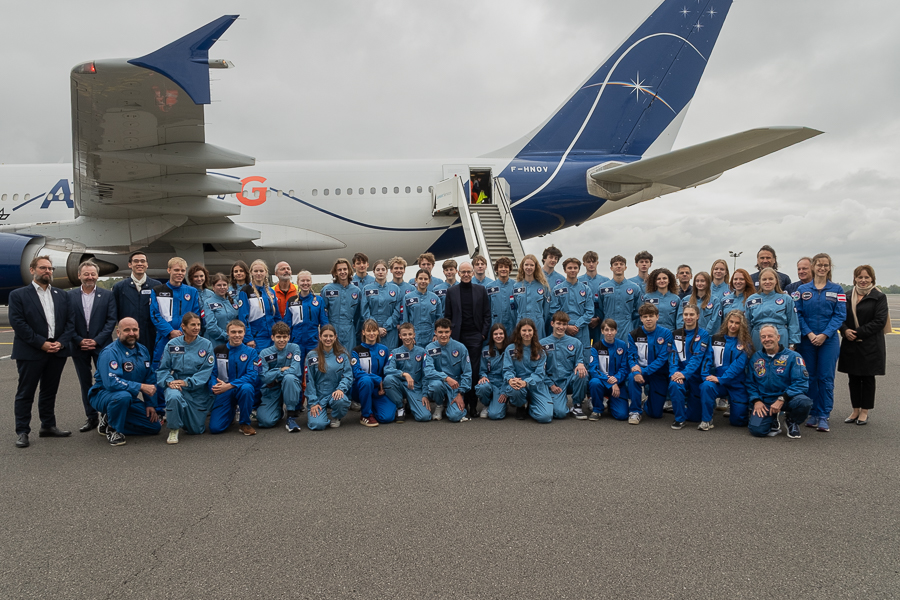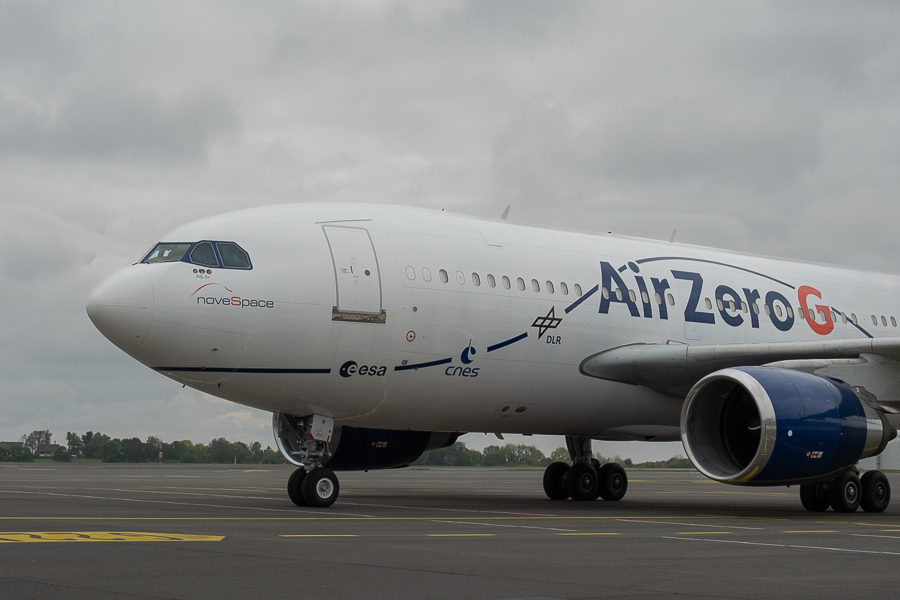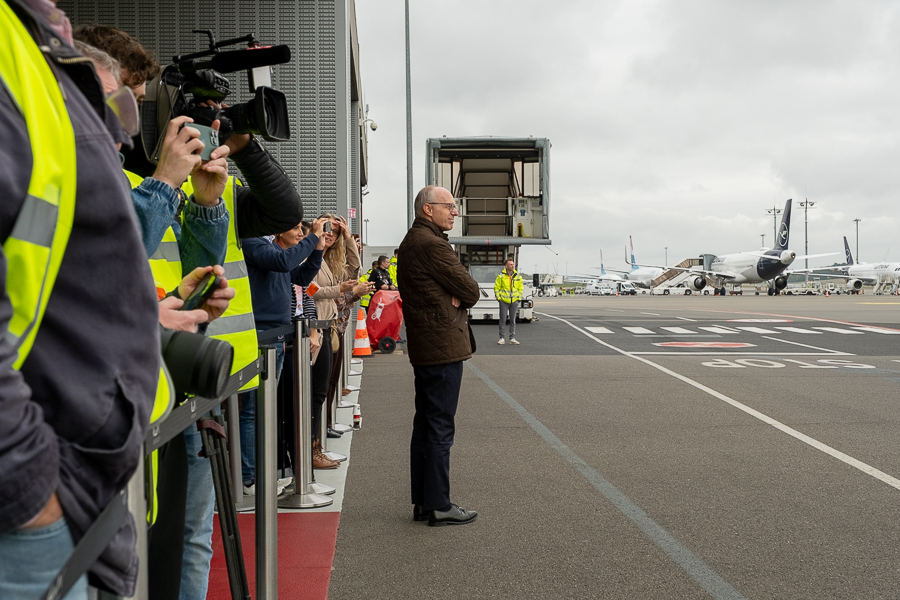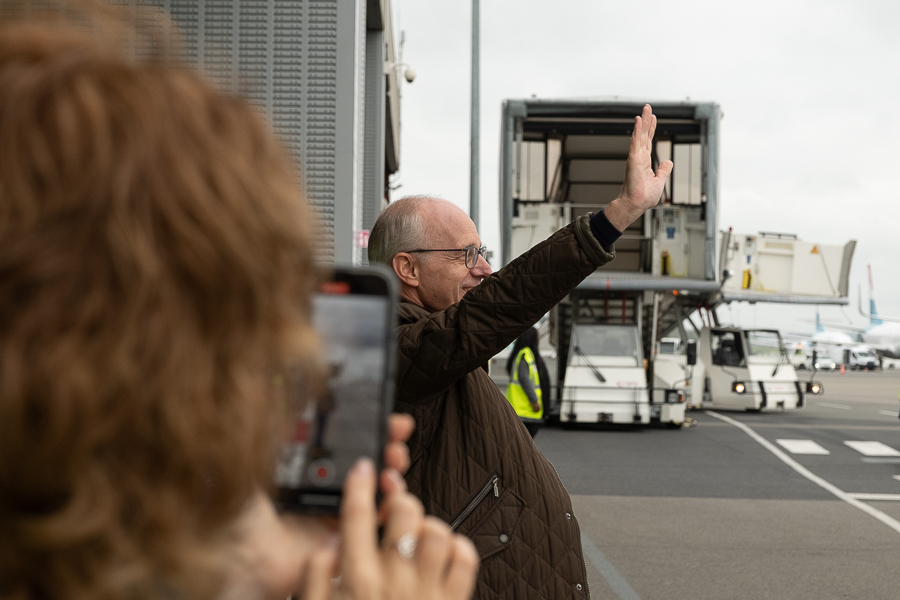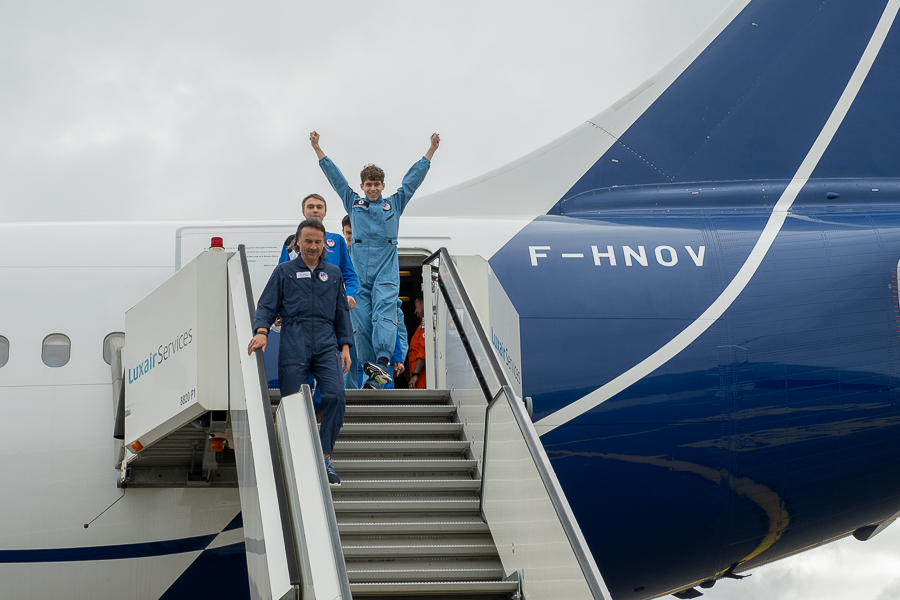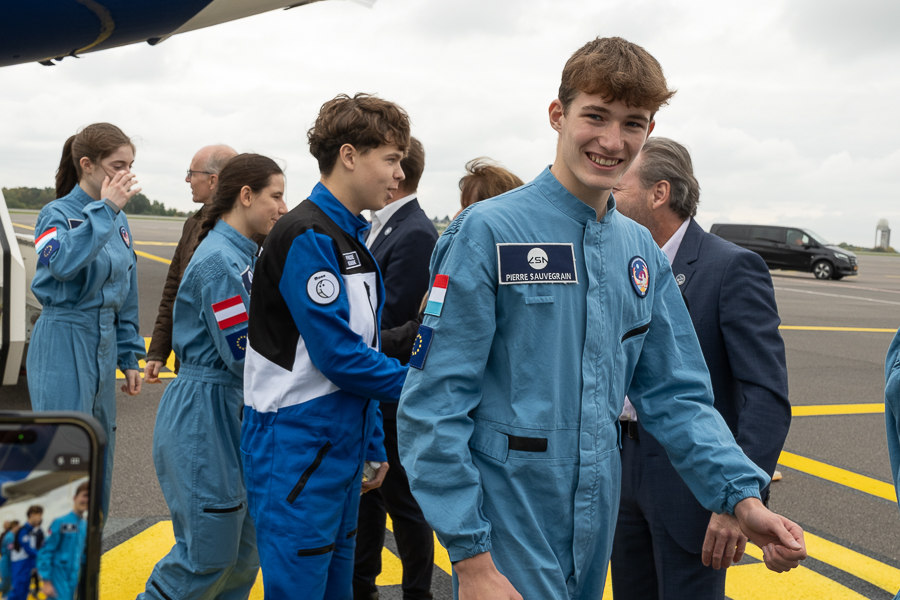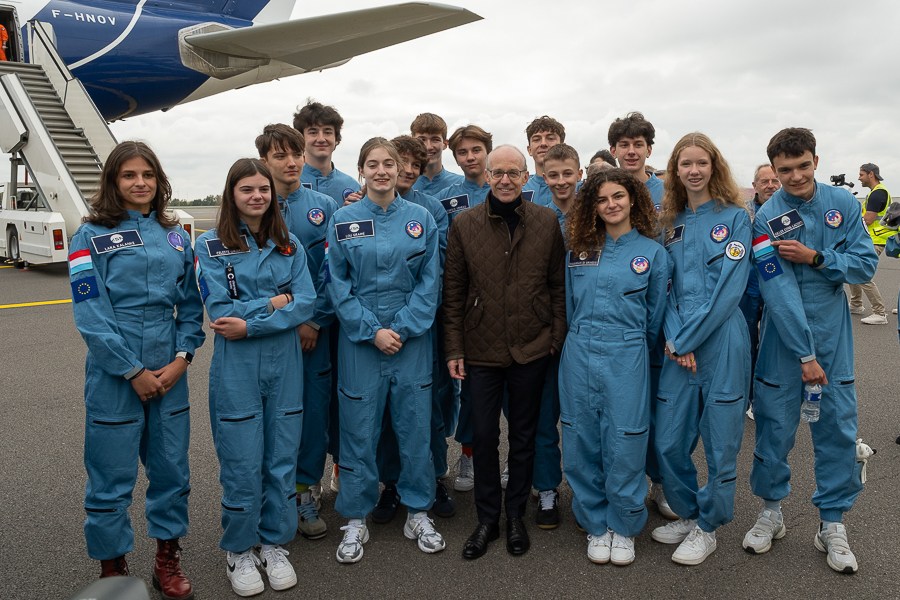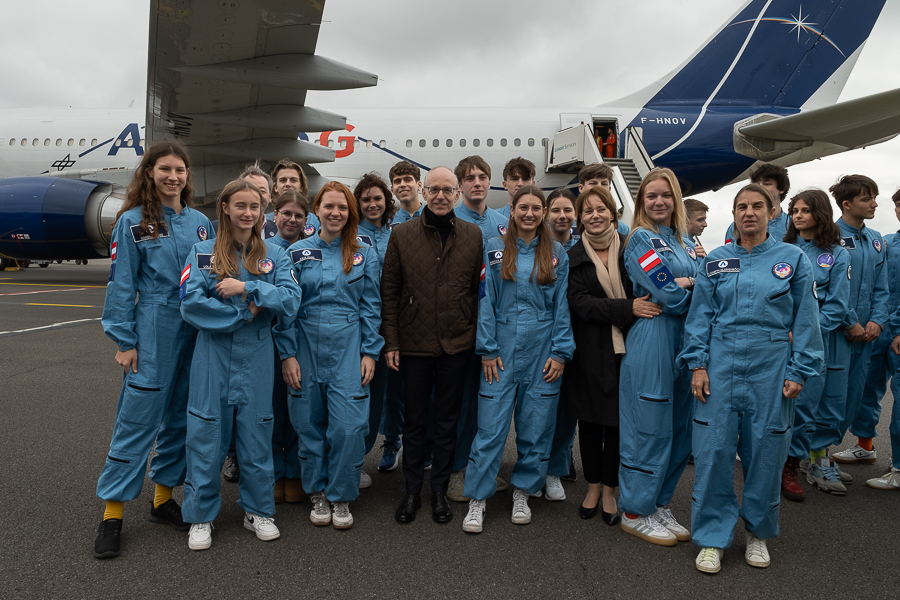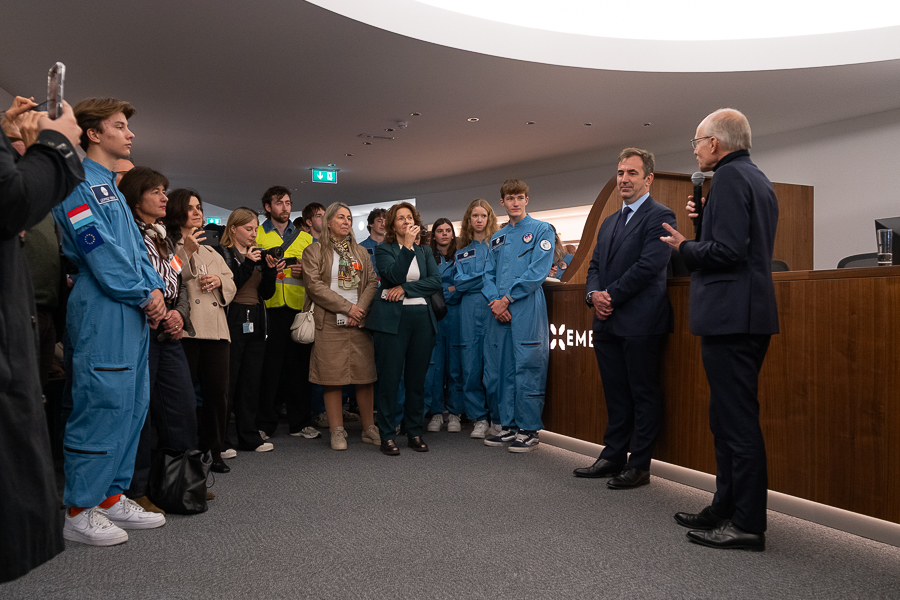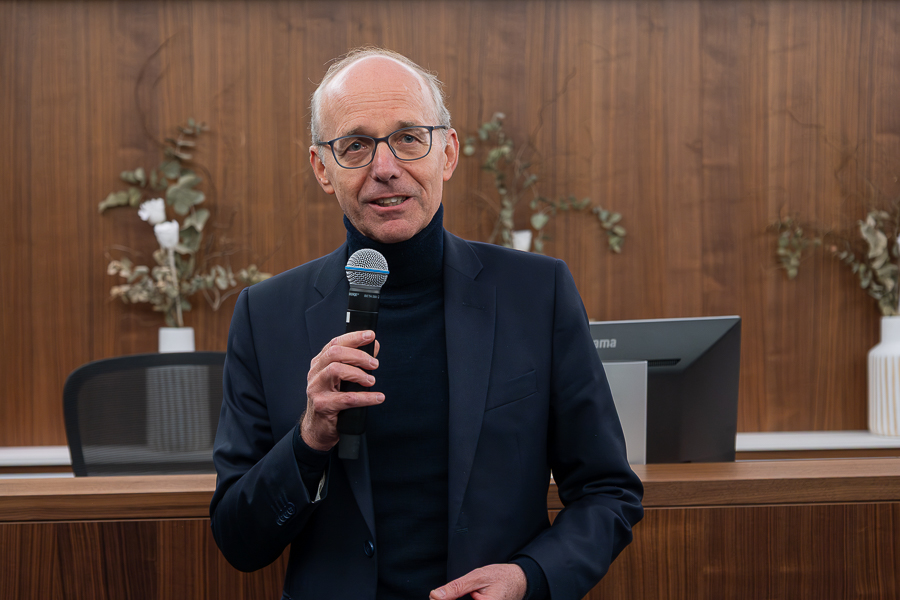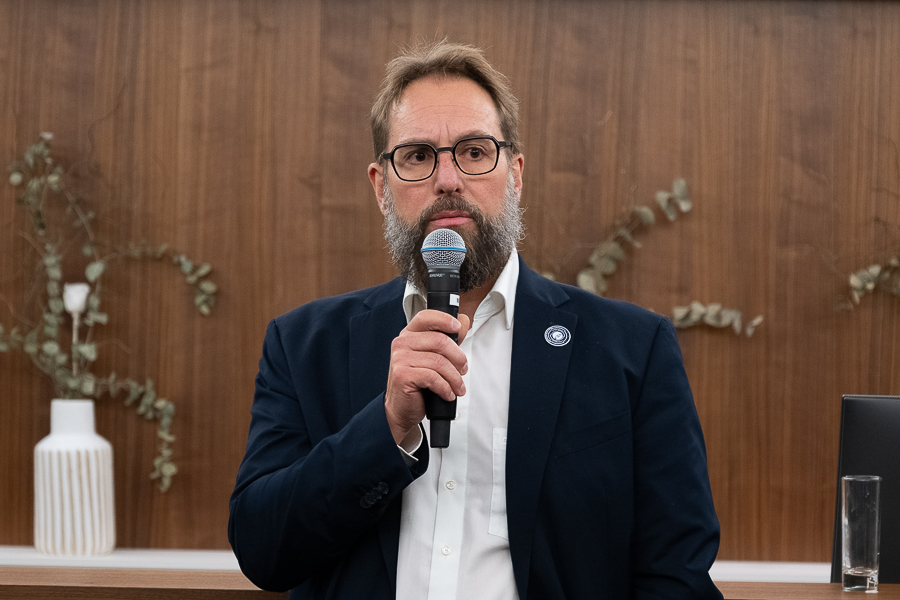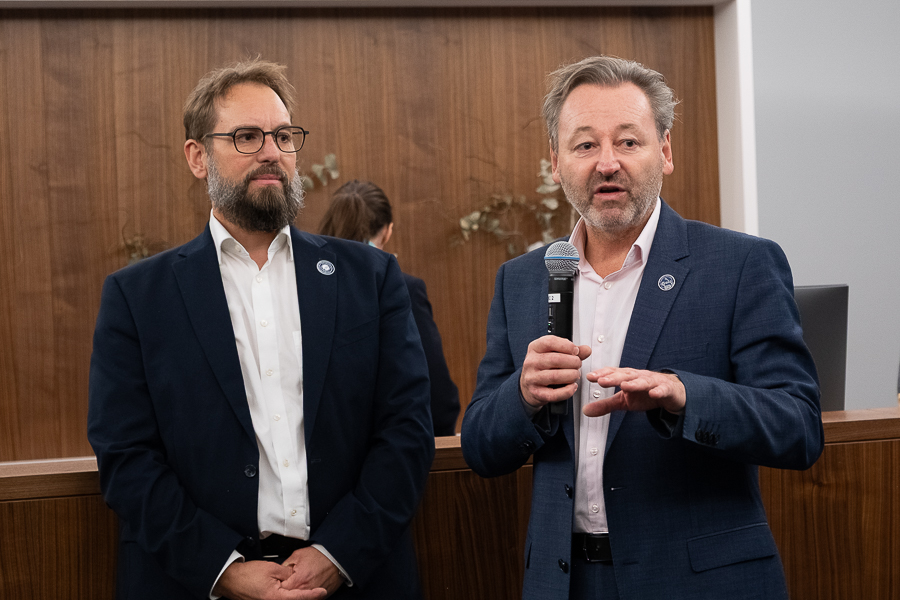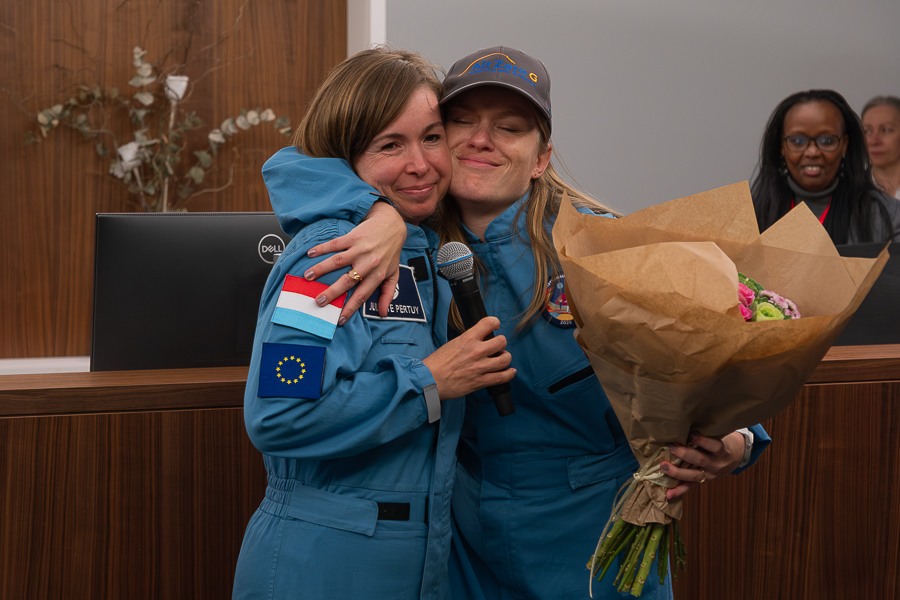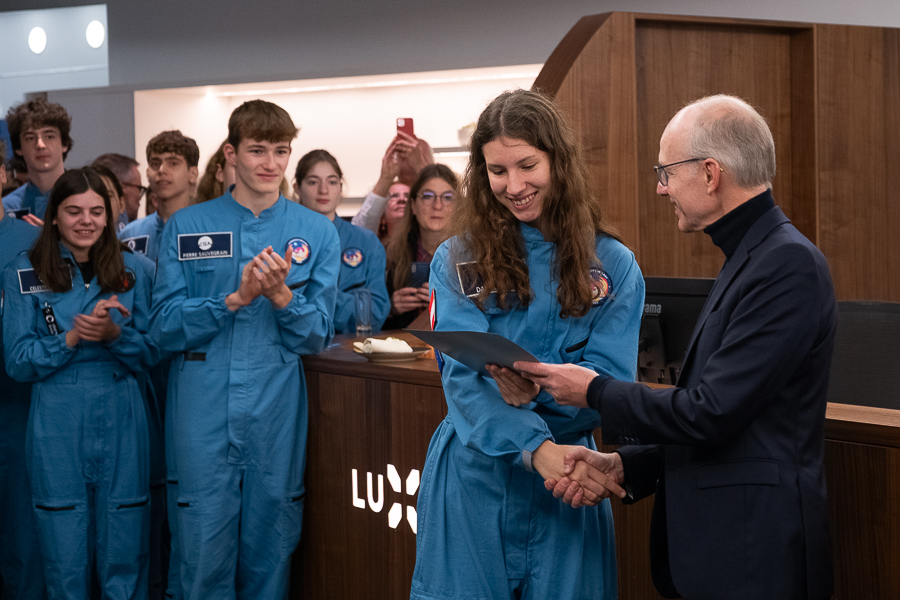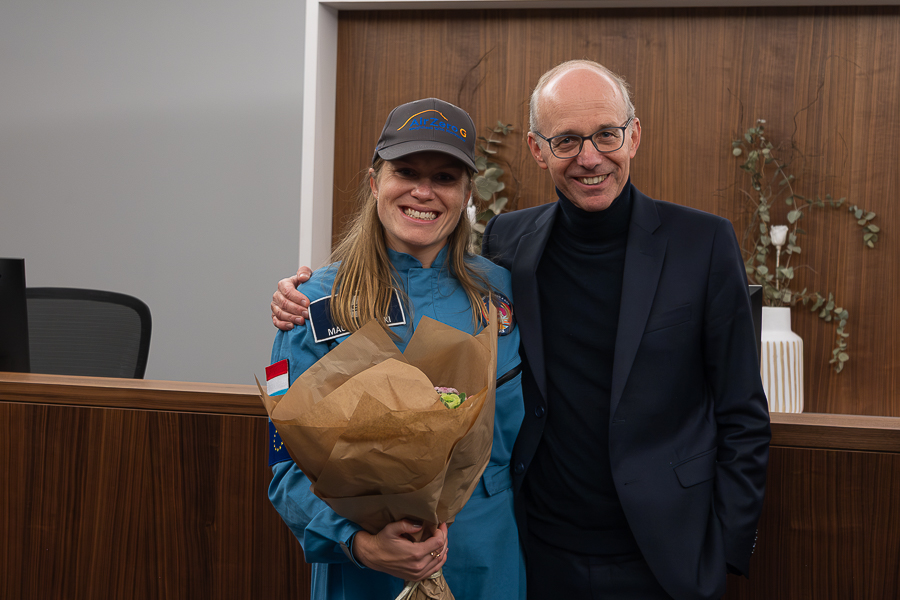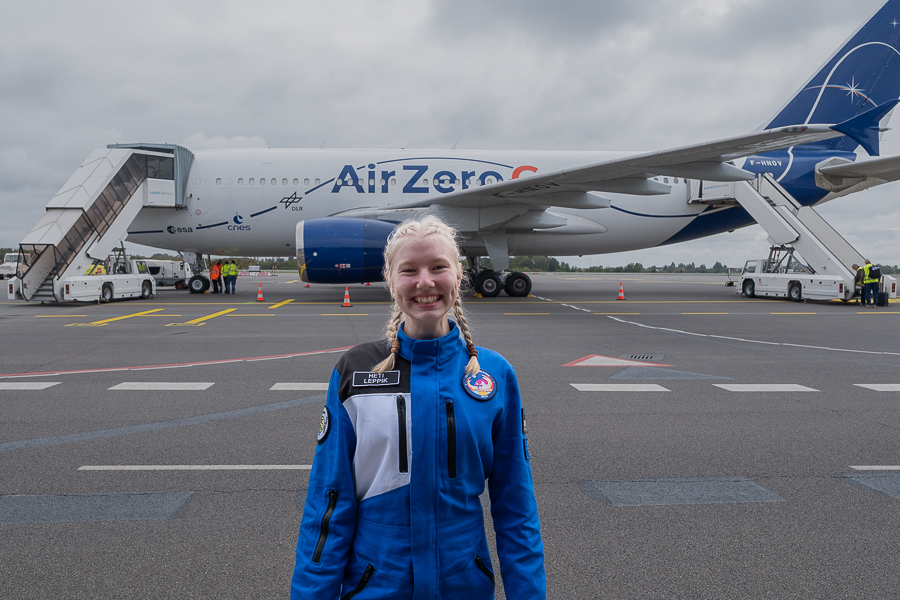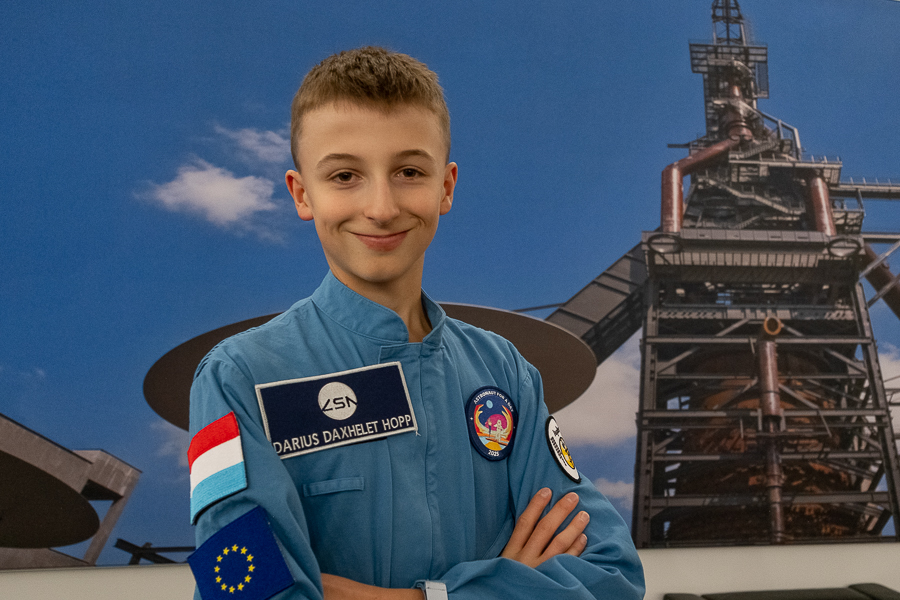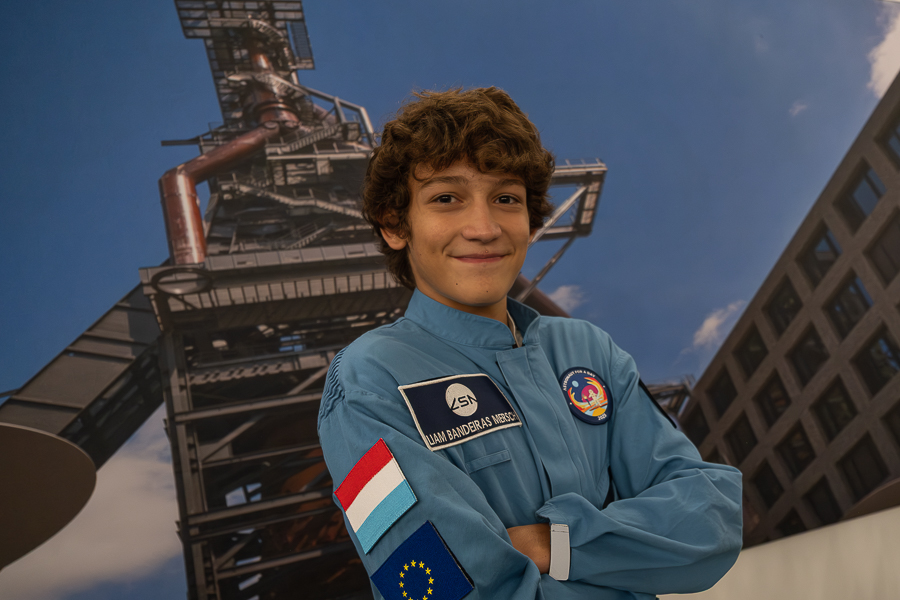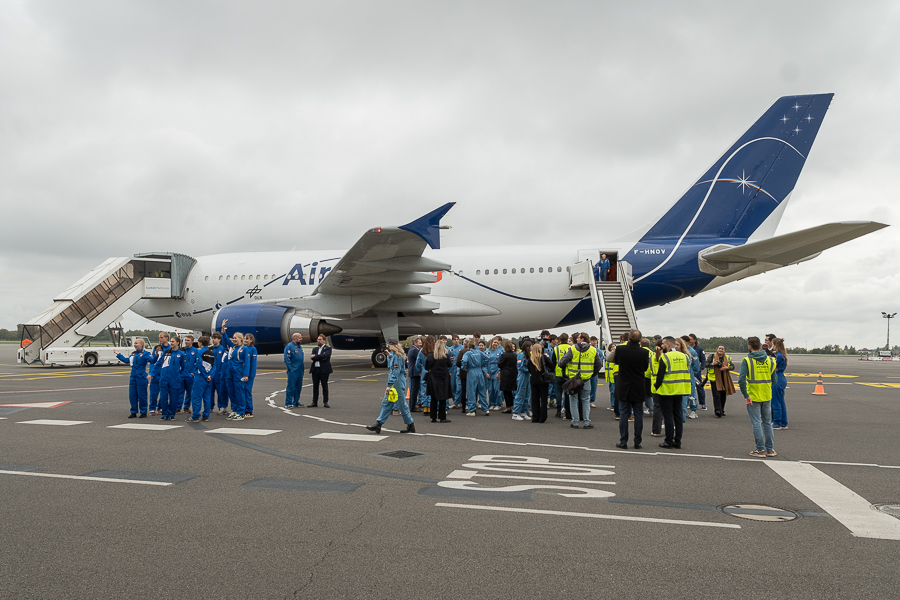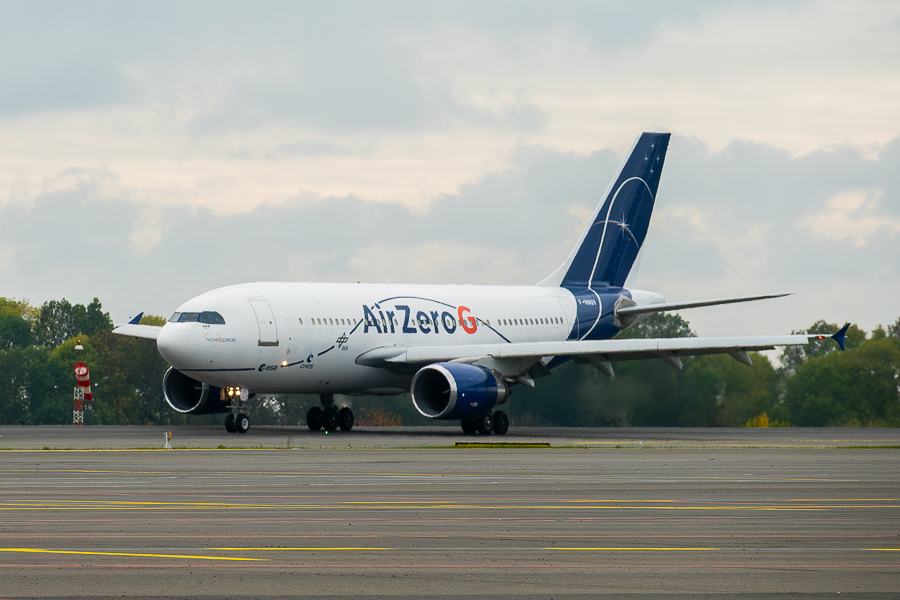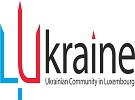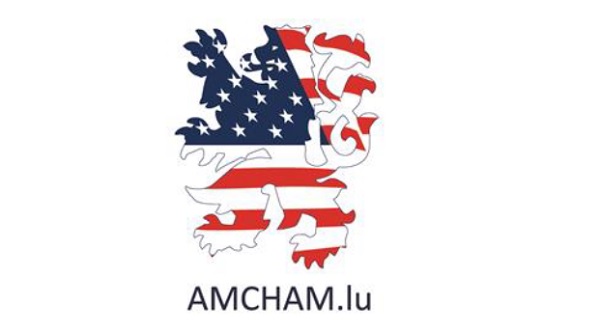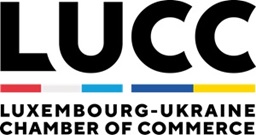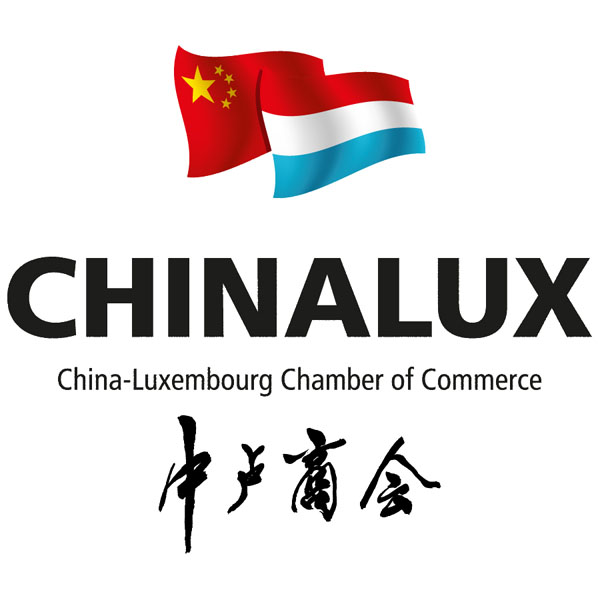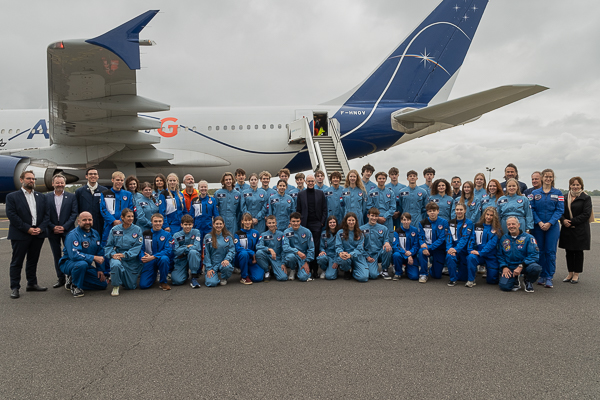 Credit: Ali Sahib, Chronicle.lu
Credit: Ali Sahib, Chronicle.lu
On Wednesday 15 October 2025, the final phase of the second edition of the “Astronaut for a Day” competition culminated in a zero-gravity parabolic flight with 38 finalists from Luxembourg, Austria and Estonia.
The project ran from February 2025 and was organised by the Luxembourg Space Agency (LSA) in collaboration with Luxembourg's Ministry of the Economy, the Ministry of Education, Children and Youth, and the Ministry of Sport. The winners from the three countries experienced the flight alongside French astronaut Jean-François Clervoy and Austrian reserve astronaut Carmen Possnig.
Parabolic flights create a situation of weightlessness for about 20 seconds. During such flights, also called "zero gravity" flights, pilots perform a manoeuvre several times during which the state of weightlessness is recreated on board. For this flight from Luxembourg, operated with an Airbus A310 by the company Novespace, three types of parabolas were carried out: one with Martian gravity, two with lunar gravity and twelve in zero gravity.
After a roughly two-hour flight, Prime Minister Luc Frieden, LSA CEO Marc Serres and Andreas Geisler, Head of the Aeronautics and Space Agency at FFG (Austria), greeted the finalists on the tarmac and joined a brief photo in front of the aircraft alongside instructors and chaperones. The group then reunited with parents and teachers for a “welcome back” lunch at the airport.
“Space is part of Luxembourg’s DNA - we may be small on Earth, but we are big in Space,” said Luc Frieden, highlighting the country’s long-standing role from SES to today’s growing activities and the need for Europe to keep its place in space. “I’m very jealous I was only invited to welcome you, I would have liked to join, and I hope to do this with another group of Luxembourg students in the coming years,” he added, encouraging the finalists to consider studies and careers in the space sector and thanking parents and teachers for their support.
Marc Serres underlined how rare the experience is: “Statistics suggest only about one person in 800,000 gets to do something like this,” and set expectations for what comes next: “We will see you again in two years for another edition, and in the meantime we count on you to give back as ambassadors for the sector over the next twelve months.”
Following the speeches, all participants received certificates, and several shared their experiences. In an interview with Chronicle.lu, fifteen-year-old Heti Leppik from Tartu, Estonia, said: “The flight was amazing, but my favourite part was the people and the workshops. I learned so much.” She added: “During zero-g, when I closed my eyes and floated, it felt like only my mind existed.”
Fifteen-year-old Liam Bandeiras Mersch (Luxembourg) said the programme broadened his view of pathways into space careers, noting that astronauts they met had started as engineers or researchers before being called up by an agency. “You can still reach your goal of going to space even if you begin as a simple engineer or biologist,” he told Chronicle.lu. “Maybe one day I could have the same experience.”
“The tests were very difficult and the interview with three judges was a little frightening,” said fourteen-year-old Darius Daxhelet from Luxembourg, who described the selection path as a self-introduction video, online psychology and logic tests, a fitness assessment in Luxembourg City, an interview at LSA and, finally, a medical exam. “I’m glad I passed the medical and could share this.”
The Luxembourg laureates will serve as space ambassadors for the 2025/2026 school year, taking part in events and activities to deepen their knowledge of the sector and promote it within their communities.

